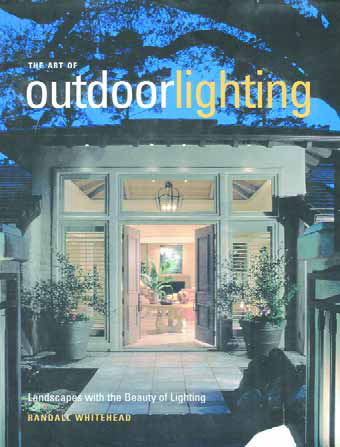water
Whether a spa is concrete or portable, custom or mass produced, sound hydraulics and good plumbing are needed if the spa's jets are to give clients the hydrotherapeutic action they crave. The manufacturers of portable spas do this work for their dealers, observes hydraulics expert Steve Gutai, putting watershapers who work in concrete at a disadvantage that must be addressed if a concrete spas are to compare favorably with a client's portable options.
In 1997, the City of Palm Springs Arts Commission held a national competition for a sculpture to be placed in a prominent public space, the Frances Stevens Park. I was intrigued by the site's high visibility - and by the fact that the California city wanted a sculpture that used water in a desert setting. Working from my studio on the East Coast, I put together an initial proposal that included a number of ideas - provocative to me, but not yet fine-tuned. It wasn't until I actually visited the site in Round Two of the selection process that I knew just how perfect a setting was being offered - a wide-open space in the center of town, ringed by tall palm trees and low-lying buildings with the stunning
The site was chosen because the existing water, terrain and natural landscape were a perfect fit: Like no other available space, the design team saw that this setting could be used to symbolize the character of Vietnam’s landscape – wetlands and bogs, water crossings, hills and forests, meadows and plains – and shaped into a memorial to casualties of a war that ended in Southeast Asia nearly three decades ago. It’s a beautiful and peaceful space, one that now encompasses four acres of land around the perimeter of Duck Pond, a small and scenic body of water nestled in the gently rolling landscape of
The fine points of landscape lighting are the worthy subject of The Art of Outdoor Lighting by Randall Whitehead (Rockport Publishers, Gloucester, Mass., 1999). It's a wonderful place to begin a journey of discovery: The text consists of 192 heavily (and beautifully) illustrated pages that break the discipline of lighting design down to several practical areas of concern - and there's a generous section all about ways to light waterfeatures. The verbiage throughout is both brief and focused, leaving most of the space for a parade of beautiful photographs of public and residential spaces. Simply by flipping through the pages and looking at some of these projects, you begin to see just how much interest and beauty can be created when you think about
As you spend your days creating structures that contain and control water, it's easy to lose sight of the water itself. Yes, we're conscious of the fact that we have to filter, treat and sometimes heat it, but in its role as the defining feature in our products, water is so familiar a participant that in some ways it almost becomes invisible. This time around, I want us all to step back from the intricacies of the design, engineering and construction tasks we all perform to consider the water itself. As we do, you'll find yourself thinking (as I often do) that we're in a special, healing trade that
No matter how it's used - as a focal point in a design or as just another feature balanced among many - the thoughtful use of water offers landscape architects and other watershape designers a huge range of aesthetic opportunities. Indeed, the water's texture, reflectivity, sounds and sculptural qualities can all be used to enhance the observer's experience as he or she moves through an environment, and in a near-infinite number of ways. Regardless of how familiar one becomes with these attributes and using them in built spaces, the presence of water in a design often yields something new, interesting and even unexpected. Whether you use it as a visual transition, a physical destination, an expression of nature or an architectural statement, water is
Home to some of the world's greatest outdoor spaces, Kyoto, Japan, is a garden lover's heaven. If you make the trip, however, there is one garden that stands above all others - an aesthetic treasure, a nature-inspired garden masterpiece that is quite possibly the most beautiful place I've ever been. Owned by the Japanese imperial family, Katsura Rikyu (pronounced kah-tsu-rah ree-kyu) is an estate in Western Kyoto near the Katsura River. Rikyu means "detached palace," but that translation is a little misleading to English speakers, because the estate does not
I love the versatility of fiberoptic lighting: The technology works equally well in conjunction with landscaping or architectural features, and because there's no electrical current to worry about at the light fixtures themselves, they're a natural around water. Better yet, you can use fiberoptics to create traditional point-light sources, or you can set them up as mellow bands of light over long stretches. I don't use fiberoptics on every job, but when the situation is right and the customer is willing, I'm eager to dig in and design a system that will wow them for years to come. As is true with any lighting system, the main reason to use fiberoptics is
I feel like I'm working backward: First, I told you about a gargantuan water lily and its very specific requirements, then I offered a more general look at water lilies that will thrive in almost any pond. Now I'm going to give you some ideas and tips for designing with all types of water plants. It might have been more logical to approach things the other way around, but the important thing is that we're ready to complete the package and talk about ways of incorporating lilies and water plants of other sorts into beautiful, overall planting designs. As always, I will avoid getting too specific with recommendations. Instead, I'll stick to basic
It's an age-old paradox, this relationship between art and science. On the face of it, things artistic may seem solely the realm of high-flying thinkers and philosophers who spend their days at the far reaches of interpretation and meaning. By contrast, engineers and scientists would seem to be dealing purely in the certainties of what is quantifiable and real. The truth is, I don't know of a modern art form that doesn't involve technology of some kind. Conversely, most branches of modern science call upon researchers to apply a great deal of intuition and creativity to the processes of exploration and discovery. In other words, neither the arts nor the sciences could exist without ideas and disciplines derived from the other. That's especially true when it comes to water systems. Whether created for aesthetic or recreational purposes, art and science can come together here in a particularly compelling and interesting way. By combining technical disciplines with






















